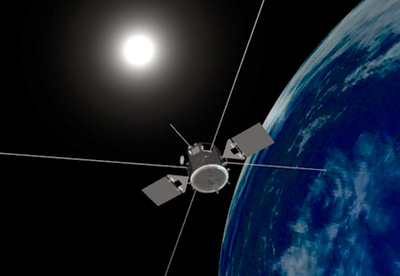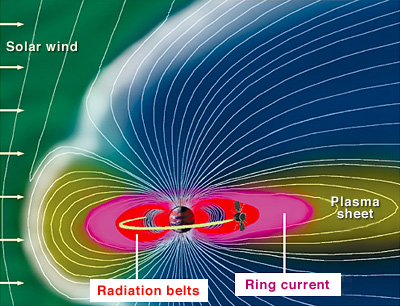TOP > Report & Column > The Forefront of Space Science > 2006 > Quest to Solve the Mystery of the Birth of the Highest Energy Particles in Geospace -Research on the Radiation Belts-
![]()

Toward the solar maximum of the 24th cycle -ERG mission- As stated above, research on the radiation belts since the 1990s has been conducted under great frustration because of the lack of observation at the equatorial plane in the magnetosphere. To overcome this situation, some radiation-belt exploration missions at the equatorial plane are proposed as part of an international joint program named the International Living With a Star (ILWS) toward the next, solar maximum period of the 24th cycle expected to occur from 2010 to 2012. RBSP (U.S.) and ORBITALS (Canada) satellites are proposed for this ILWS program. With these multiple satellites, observations covering different places (distances, local time) in the radiation belts at the same time are planned. To participate in the international program, we are going to initiate a project called the ERG (Energization and Radiation in Geospace).  
Fig. 3 shows an artist’s impression of the ERG satellite and area to be explored. The ERG satellite will observe simultaneously plasma particles, magnetic field and plasma waves associated with acceleration of the radiation belt’s particles over a wide range of energy and frequency bands at the equatorial plane. With observations by the satellite, we aim to solve the external supply process and internal acceleration process and to elucidate their respective mechanisms in detail. In cooperation with U.S. and Canadian satellite plans, we will also realize comprehensive geospace exploration on an unprecedented scale. Moreover, observations from the ground, taking advantage of rapidly advancing remote-sensing technology, will play a role to complement the ERG satellite observations. In this way, we plan to observe geospace simultaneously from both space and the ground. Meanwhile, large-scale numerical simulation, which is difficult with conventional computers, is being executed for geospace research due to advances in IT technology. Researchers engaged in the simulation will join the ERG project, too. Researchers from three research areas will join together to combine the “observation by satellites,” “remote sensing from the ground” and “numerical computation” to understand the formation process of high-energy particles in geospace. The high-energy particle acceleration is a fundamental and common theme, not limited to the Earth’s magnetosphere but applicable to particle acceleration in magnetospheres of planets and other celestial bodies. Geospace is the only area where “direct observation of acceleration” is possible (it is too difficult with distant planets or celestial bodies). The ERG project will explore sites in geospace where the highest energy particles are born, and will aim to reveal the mechanism of particle acceleration. (Yoshizumi MIYOSHI)
|
||||




